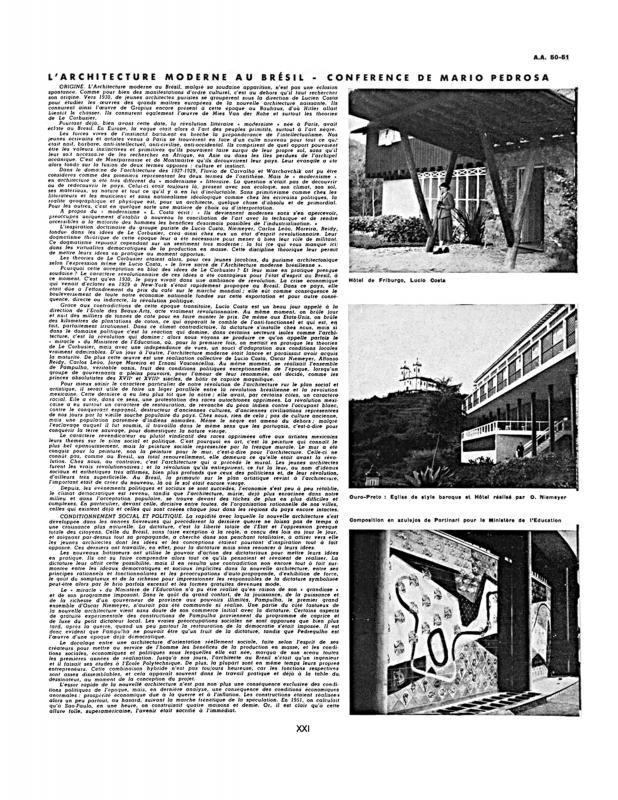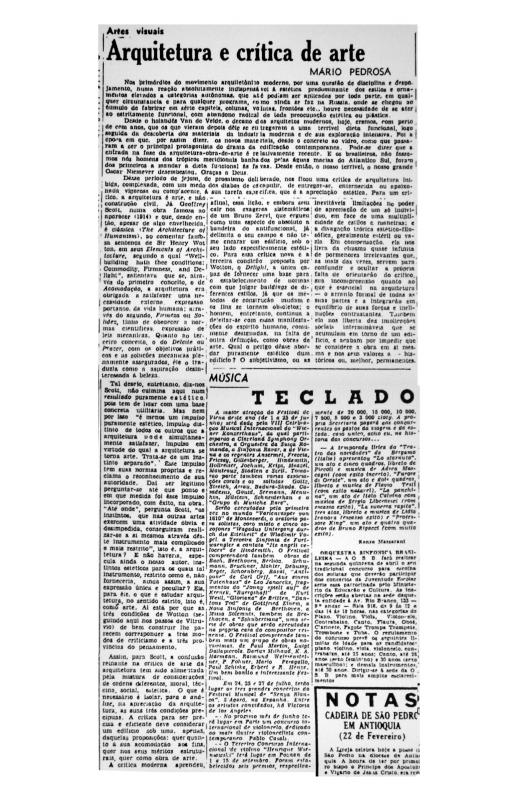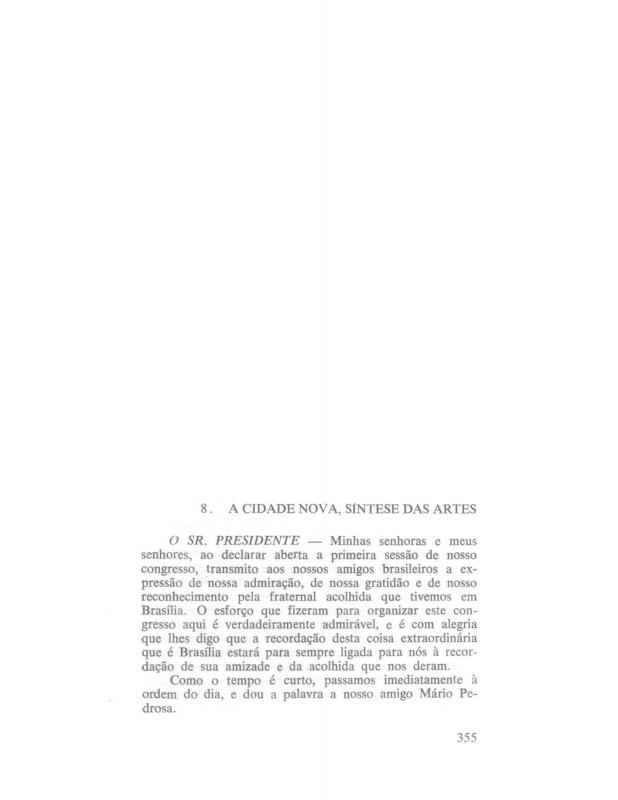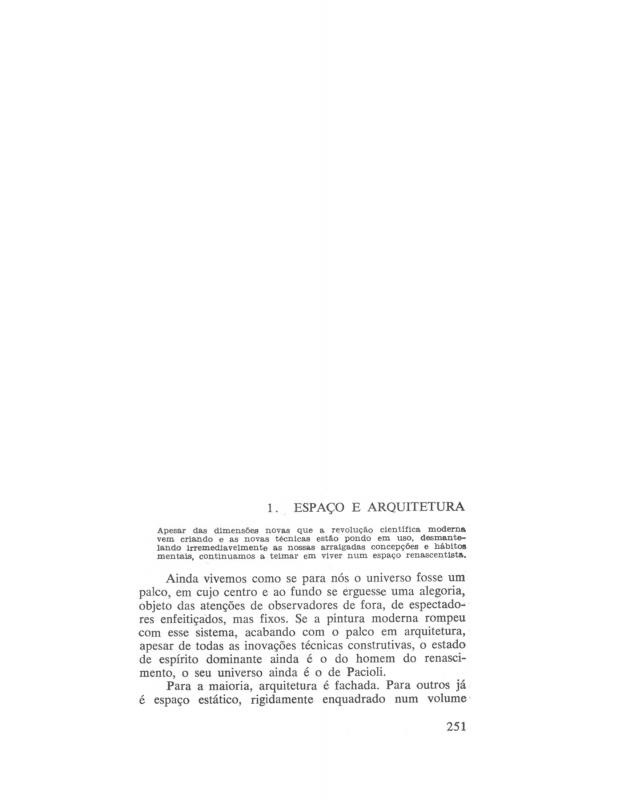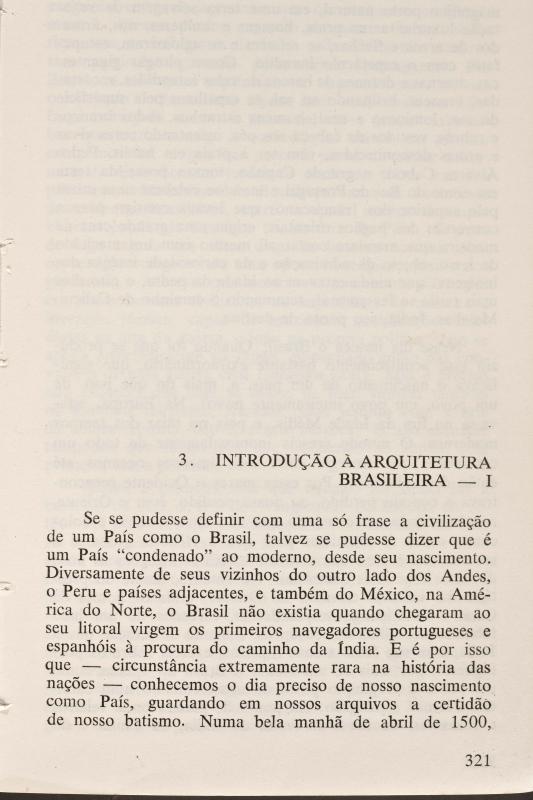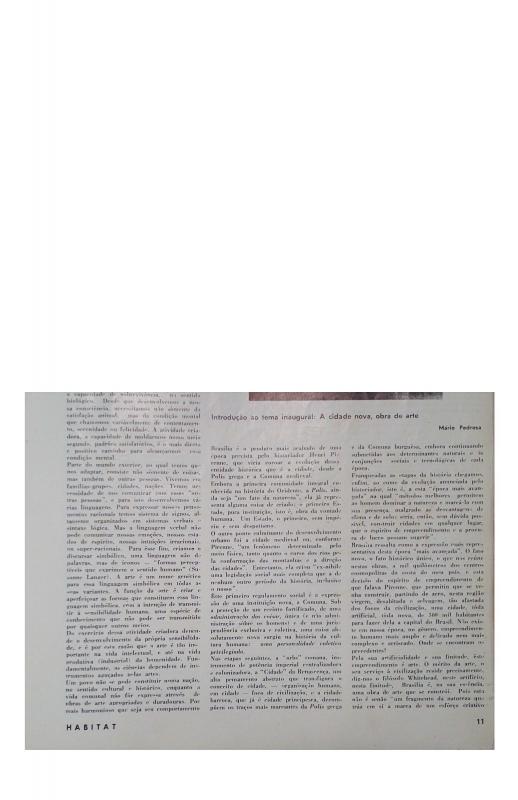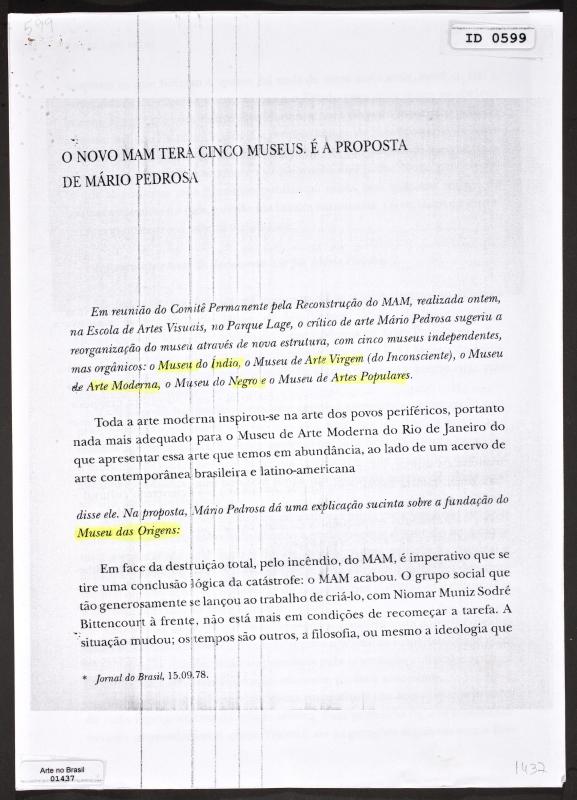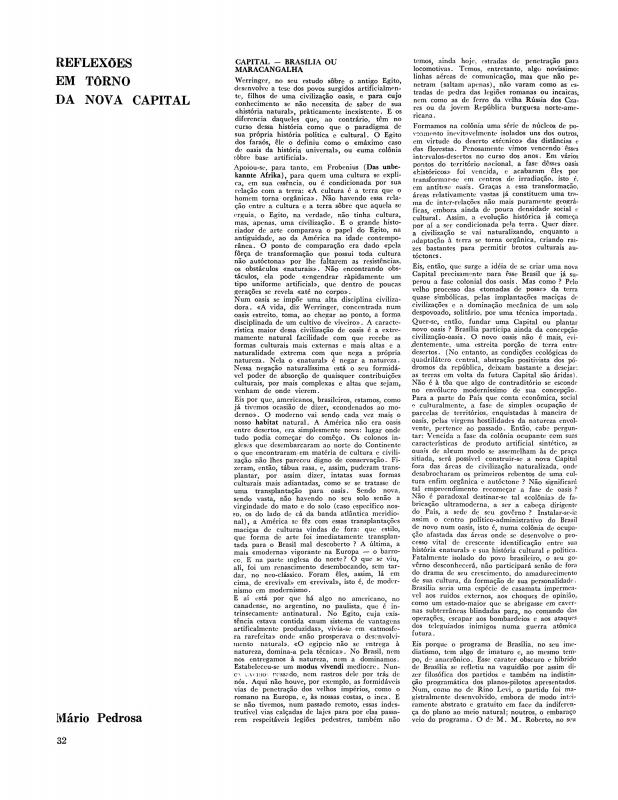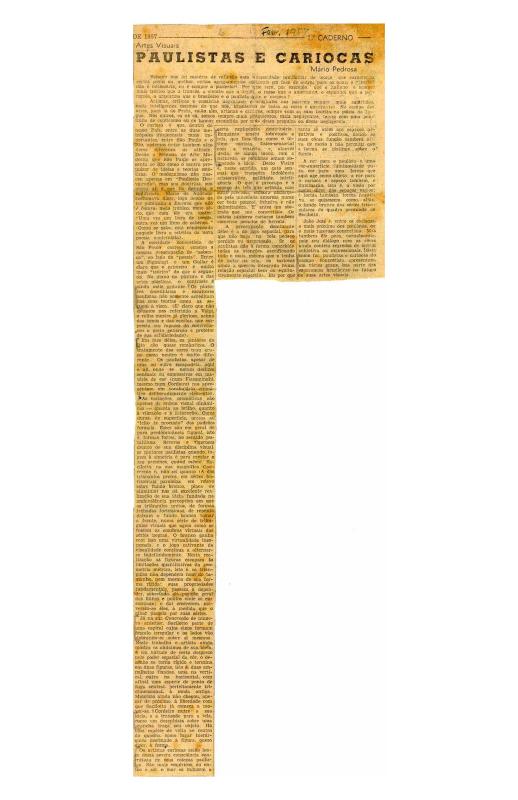This article, dated February 1967, was originally published in GAM magazine. Though it may have been published earlier, it is still regarded as the document that describes the original design for the plaza that surrounds the Rectory at the USP. However, the third part of the article focuses on the research and education missions of the museum—the MAC-USP—which suggests that an art and design school affiliated with the museum had already been established.
The intellectual and politician Mário Pedrosa (1900–81) is undoubtedly Brazil’s most important twentieth-century art theoretician and critic. He was originally an international politics columnist for the Diário da Noite, and joined the PCB (Brazilian Communist Party) in the 1920s. He was imprisoned in 1932 for his political affiliation (he was a Trotskyite at the time). He lived in exile in France and New York during the Getulio Vargas regime’s Estado Novo, but returned to Brazil after the war, at which time he worked for Correio da Manhã. His anti-Stalin convictions prompted him to start the weekly publication Vanguarda Socialista. His thesis on aesthetic teaching, “Da natureza afetiva da forma na obra de arte” (1949), which he presented at the Faculdade de Arquitetura (Rio), included all his knowledge of philosophy and Gestalt psychology. At that time he was one of the founders of the AICA (1948) and he helped organize the International Congress of Art Critics (Brasilia, 1959). He wrote an art criticism column for the Tribuna da Imprensa (1950–54), was among the organizers of the 2nd and 3rd São Paulo Biennials (1953 and 1955), and was appointed director of the MAM-SP (1961–63). He was Secretary of the National Council of Culture during the brief Jânio Quadros administration. During the military dictatorship he went to Chile, where he became the director of the Museo de la Solidaridad in Santiago. After the Pinochet coup (1973) he moved to Havana as the Secretary of the Museo de la Resistencia Salvador Allende. He returned to Brazil in 1977 (in the early days of the Amnesty) and was the first to sign the founding manifesto for the PT (Partido dos Trabalhadores, 1980). His huge library (eight thousand volumes) is partially accessible at the Biblioteca Nacional de Rio de Janeiro.
[As complementary reading, see the following essays by Mário Pedrosa in the ICAA digital archive: “L’architecture moderne au Brésil” (doc. no. 1086489); “Arquitetura e crítica de arte” (doc. no. 1086553); “A cidade nova, síntese das artes” (doc. no. 1086503); “Espaço e arquitetura” (doc. no. 1087020); “Introdução à arquitetura brasileira – I; Introdução à arquitetura brasileira – II” (doc. no. 1086620); “Introdução ao tema inaugural: A cidade nova, obra de arte” (doc. no. 1110409); “MAM: reconstrução” (doc. no. 1111078); “O novo MAM terá cinco museus. É a proposta de Mário Pedrosa” (doc. no. 1110466); “Reflexões em torno da nova capital” (doc. no. 1086728); and “Paulistas e cariocas” (doc. no. 1085056), among others].
NOTE: This document belongs to the Fundo Ciccillo Matarazzo (Francisco Matarazzo Sobrinho, 1898–1977), which was recently created as a database for researchers. This database includes documents from the personal archives of the creator of the Fundação Bienal de São Paulo, the Museu de Arte Moderna de São Paulo and, subsequently, the MAC-USP (Museu de Arte Contemporânea da Universidade de São Paulo), among other important institutions in the city of São Paulo.

